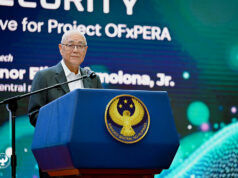Banks show smaller returns in Q3 despite faster asset growth
By Lourdes O. Pilar
Researcher
THE COUNTRY’s biggest banks were less profitable last quarter even as growth in assets and capacity to absorb risky assets improved.
BusinessWorld’s 3rd Quarter Banking Report showed the combined assets of the 46 universal and commercial banks (U/KBs) operating in the country grew by 9.89% to P17.302 trillion in the July-September period from the P15.746 trillion in 2018’s comparable three months.
Asset growth in the third quarter was faster than the 9.71% notched in the second quarter as well as last year’s 9.87%.
Bank loans, which make up around half of big banks’ assets, totaled P9.504 trillion, 9.09% more than the P8.712 trillion recorded in 2018’s third quarter.
In terms of profitability, U/KBs’ 6.95% return-on-equity (RoE) was less than the 9.13% in the second quarter, albeit more than the 4.82% of 2018’s third quarter. RoE — the ratio of net profit to average capital — measures the amount that shareholders make on every peso invested in a company.
At the top in terms of assets and loans was BDO Unibank, Inc., followed by Metropolitan Bank & Trust Co. (Metrobank) and the Bank of the Philippine Islands (BPI).
Among banks with assets of at least P100 billion, the Philippine National Bank (PNB) topped in terms of growth, increasing 29.29% year on year. It was followed by Hongkong and Shanghai Banking Corp. Ltd.’s 23.83% and Asia United Bank Corp.’s 17.23% increases.
The same three months saw the Development Bank of the Philippines as the most aggressive lender, with a year-on-year growth of 34.54%, followed by those of PNB (19.44%) and East West Banking Corp. (17.65%).
In terms of deposits, BDO remained on top at P2.408 trillion while the Land Bank of the Philippines came in second at P1.742 trillion, ahead of BPI’s P1.622 trillion and Metrobank’s P1.578 trillion.
ASSET QUALITY DIPS
Soured debts held by the U/KBs rose during the quarter as nonperforming loans (NPL) hit P158.671 billion, 10.35% more than the P143.793 billion in the second quarter.
The Bangko Sentral ng Pilipinas (BSP) defines NPLs as loans that were left unpaid for at least 30 days beyond due date. These are considered bad loans as they have a slim chance borrowers would be able to settle such liabilities.
The NPL ratio — gross NPLs in proportion to total gross loans — worsened to 1.66% in the third quarter from 1.58% in the preceding three months.
Similarly, their nonperforming assets ratio — nonperforming loans and foreclosed properties in proportion to total assets, went up 0.75% from 0.74% the previous quarter.
As percent of total assets, foreclosed real and other properties steadied at 0.3% in the third quarter.
The banks’ coverage ratio — which is the ratio of the total loan loss reserves to gross NPL — went down to 107.97% in the third quarter from 113.2% in the previous quarter.
Nevertheless, this was more than enough to cover the entire value of bad loans held by big banks, with loan loss reserves totaling some P171.316 billion.
On the other hand, the U/KBs’ ability to absorb losses from risk-weighted assets improved as their median capital adequacy ratio (CAR) — a measure of bank solvency — rose to 20.03% from the 19.5% seen in the preceding quarter.
The ratio remains well above the regulatory minimum of 10% set by the BSP as well as the international minimum standard of eight percent.
BusinessWorld Research has been tracking the financial performance of the country’s U/KBs on a quarterly basis since the late 1980s using banks’ published statements of condition.




